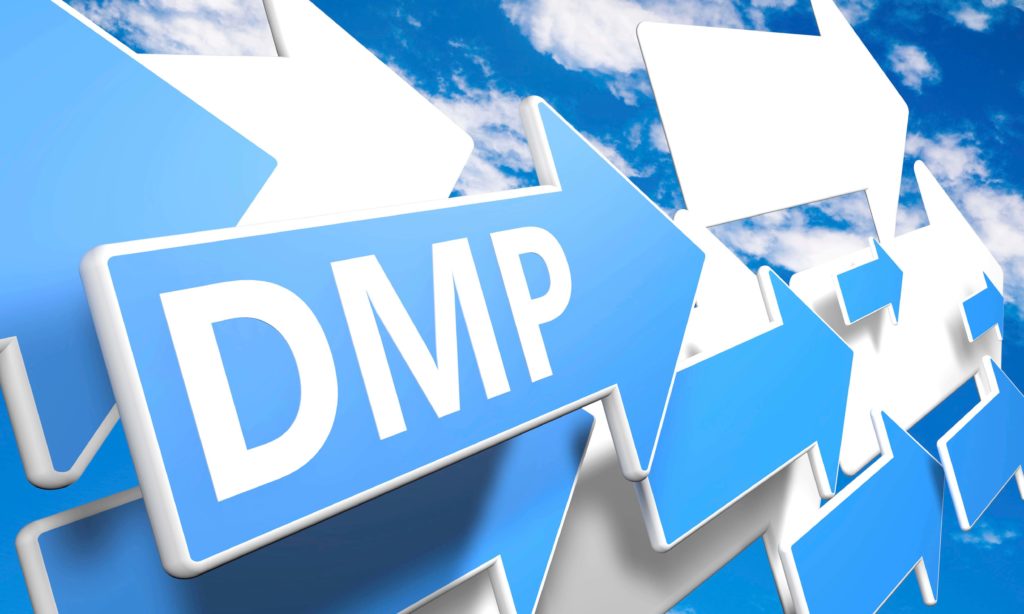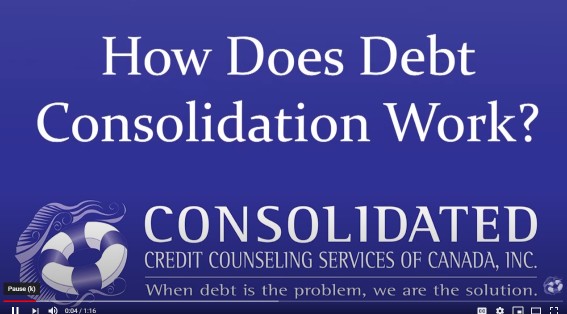It may sound counter intuitive, but you can use debt to pay off debt. Learn how debt consolidation works and what you can do to make sure you’re a good… Watch Video
Is a Debt Management Program Right for You?
Debt management can help you become debt free faster when traditional monthly payments don’t work.
When you’re juggling multiple credit card balances, it can feel like you’re trapped in a cycle of debt. If minimum payments aren’t working to make a dent in your balances, then you need to find a solution that will make it easier to become debt-free. A debt management program is one of several solutions that can provide relief from high interest rate credit card debt. But as with any financial solution, there are pros and cons to consider before you decide if this is the right solution for you.
This guide can help you understand how debt management works and how it compares to other solutions for credit card debt. Our goal is to help you weigh the benefits versus your needs and goals, so you can make an informed decision as you find the best way to get out of debt in your unique financial situation. If you still have questions or would like a free evaluation to see if you’re a good fit for the program, call 1-888-294-3130 to speak with a trained credit counsellor.
Canadians are facing record levels of debt, and that debt has created a great deal of stress, and even sleepless nights for many consumers. – Kelley Keehn, FP Canada Click To TweetWhat is a debt management program?
A debt management plan or program – DMP for short – consolidates credit cards and other unsecured debts into one monthly payment. It’s not a loan and unlike other forms of debt consolidation, you still owe your original creditors. It’s basically a professionally-assisted debt repayment plan that you set up through a credit counselling agency.
The goal of a DMP: Get out of debt faster
The goal of a debt management plan is to reduce or eliminate interest charges and fees applied to your balances each month. This makes it easier to pay off your balances faster. You concentrate on paying off principal – the actual debt you owe – instead of throwing money away on accrued monthly interest charges.
What types of debt can I consolidate with a debt management program?
A DMP is specifically designed to help you find relief from credit card debt. However, you may also be able to include some other types of unsecured debt:
- Retail store credit cards
- In-store credit lines
- Unsecured personal loans
- Collection accounts
- Pay day loans
You cannot include secured credit, such as a mortgage or a car loan. You also cannot include student loans.
How does a debt management program work?
Step 1: Call for free credit counselling
The first step to enrolling in a debt management plan is to make sure you’re a good fit for the program. Nonprofit consumer credit counselling agencies provide debt management programs to help consumers get out of debt so they can regain financial stability. So, your journey to become debt-free starts with a free evaluation.
- A trained credit counsellor reviews your debts, credit and budget with you.
- Then they explain the options that you have to get out of debt.
- If a DMP is your best option, they help you find a monthly payment that will work for your budget.
- By the end of the consultation you’ll know:
- The monthly payment you can expect to pay on a DMP
- Which debts you should be able to include
- What fees you’ll pay to cover the monthly administration costs of your plan
- The credit counsellor will also help you set up a budget, so your expenses are balanced with your income.
- Then you can decide if you want to enroll right then or take some time to consider your other options.
Who is a good fit for a debt management program?
In order to be a good candidate for a debt management program, you need to have the means to make a monthly payment. On average, debt management plans reduce a credit user’s total credit card payments by 30-50 percent. However, you still need to be able to pay something each month towards your debt. So, if you’re unemployed, this solution may not work for you.
In addition, most of your debts that you wish to enroll should be credit card debt. You may be able to include other debts in the program, but credit cards should be your primary concern.
Step 2: Enrolling in the program

- That your creditor agrees to accept payments through your DMP.
- How much they’re willing to reduce or eliminate the APR applied to your balance.
- That the creditor is willing to stop future penalties and fees that would apply to your balance.
Minimizing APR and stopping penalties is crucial because it’s the mechanism that makes it easier to pay off your debt faster. As each creditor agrees to the terms of your debt management plan, they’ll send you confirmation letters.
During this enrollment period, you still make the minimum payments to all your creditors. Then, once all your creditors agree to the terms of your program, your debt management plan officially starts.
Step 3: Working to become debt-free
Each month during your debt management program, you make one payment to the credit counselling agency. Then they distribute the payment to your creditors as agreed. You’ll be able to monitor your progress through our client members portal. You can also monitor the balances on your accounts, which will gradually decrease as you work your way through the program.

- How to manage your credit
- Keys to controlling debt so you can use credit cards in a healthy way
- How to save money, so you can avoid debt
- Consistent budgeting techniques
- How to plan for key life events that often lead to debt
|
Ready to see if a debt management program is right for you? Talk to a trained credit counsellor now for a free evaluation. |
Find Relief Today |
How does a debt management program affect your credit?
During your enrollment, all credit cards that you include in the program will be frozen. This means you won’t be able to make any new charges on those cards. In addition, your enrollment in the program will be noted in your credit report. This means you won’t be able to apply for new credit cards until you graduate.
The notation on your credit report will remain for two years after you complete the program whether you finish in 2, 3, 4 or even 5 years. Once you graduate, the accounts you included in the program are generally closed. However, you will be able to apply for new credit. If your credit score is low, there are techniques you can use to start rebuilding your credit and obtain new credit cards, even before the two years are up.
Weighing the pros and cons of debt management
As with any debt solution, there are pros and cons to enrolling in a debt management plan. You need to understand them, so you can weigh the benefits and drawbacks based on your current financial situation. This will also help you compare a DMP to other solutions.
Advantages of debt management plans
- One payment. Instead of juggling multiple payments each month, you only need to worry about one payment.
- Won’t lose valuable assets. A DMP can help you avoid liquidating assets, such as your home or car, to pay off your debt.
- Less severe impact to your credit score. While a DMP will be noted in your credit report, the notation is less severe than other solutions. Bankruptcy, debt settlement and consumer proposals will all cause more severe credit damage. The negative items also remain on your credit report for longer.
- Additional support. During your enrollment, you get free access to a range of financial literacy resources that help you build better financial habits. You can also call the credit counselling team for questions and one-on-one coaching.
- Shorter repayment period. A DMP ensures you pay off your debt in 60 payments or less. You’ll be debt free within five years or less.
- No public record. Both consumer proposals and bankruptcy create public record of the event. With a DMP, only you and your creditors will know of your financial situation.
- Reduced or eliminated interest and fees. When you enroll, your creditors agree to reduce or eliminate interest charges and stop future penalties and fees.
- Eliminate your credit card debt. Credit card debt can be extremely difficult to pay off on your own. This program will give you back your financial control. Then you can decide if you want to continue living credit-free or start using credit in a financially healthy way.
Disadvantages of debt management plans
- Third-party assistance appears on your credit report. A DMP will be noted on your credit report during your enrollment. It will also be noted for two years after you graduate from the program. This may impact your ability to get new credit during that time.
- Hit to your credit score. Even though a debt management plan negatively affects your score less than other debt relief options, you can still expect your score to decrease.
- Agreement from your creditors. Debts can only be included in a DMP if the creditor agrees to the terms of the program. Most major creditors will readily sign off. However, if you want to include other debts, such as collections or unsecured personal loans, creditor approval is not guaranteed.
- Regular monthly payments. Even though the payments are typically lower than your total monthly payments now, you still must make a payment every month. If you miss any payments, you may not be able to continue with the program.
What happens if I can’t continue with a debt management program?
Enrolling in a debt management program is completely voluntary. You decide when to enroll and can drop out at any time if your financial situation changes. All payments made to reduce your balances will still be credited. So, you’ll still have made progress on eliminating your debt.
However, in most cases, if you drop out before you complete the program, the credit card companies may restore all of the original interest rates and fees that were previously applied to your account.
Call to speak with the credit counselling team if you’re having trouble
Always keep in mind that the credit counselling team is here to provide support. We’re here to be your advocates. If you’re having trouble making a payment or balancing your budget, contact the credit counselling team. We can help you make arrangements and work things out so you can stay enrolled in your program.
How does a debt management plan compare to other solutions?
DMP vs debt consolidation loans
If you have a good credit score and owe less than $20,000, then you may be able to consolidate debt on your own. A debt consolidation loan is an unsecured personal loan that you take out through your bank or another lender. You use the funds from the loan to pay off your credit cards and other debts. This leaves you only the loan payment to worry about.
Both of these solutions consolidate your debt into one payment, but with a DMP you still owe your original creditors. The credit counselling agency simply helps you set up a repayment plan that works for your budget. They also act as a go-between for you and your creditors.
The other major difference is that a consolidation loan typically won’t freeze or close your credit cards. It will zero out the balances, but you can keep charging. This creates some added risk as you get out of debt, because you can run up new balances. As a result, you may end up with more debt, instead of less.
Debt management vs debt settlement
The key difference between these two programs is how much of your debt you pay back. A DMP pays back everything you charged but reduces or eliminates interest charges. A debt settlement program ignores interest charges entirely and focuses on only paying back a percentage of what you owe.
Since you don’t pay off your balances in-full, debt settlement has a greater negative impact on your credit report. The penalties remain longer in your credit report and the decrease in your score may be more severe than with debt management.
On the other hand, debt settlement is generally faster and cheaper overall. If you don’t care about longer-term credit score damage and you simply want to get out of debt faster for the least amount of money possible, settlement will generally provide a cheaper exit.
DMP vs consumer proposal
Like settlement, consumer proposals also allow you to get out of debt for a percentage of what you owe. And as with settlement, this benefit of getting out of debt cheaply has a greater negative impact on your credit score.
Another difference is the cost. Consumer proposals often require fees of $1,500 or more. This can be expensive if you’re already having trouble making ends meet. By contrast, DMP fees are comparatively low and rolled into the monthly payment on the program.
|
Don’t wait to get the help you need. See if a debt management program can help you get out of debt faster. GET HELP NOW |


